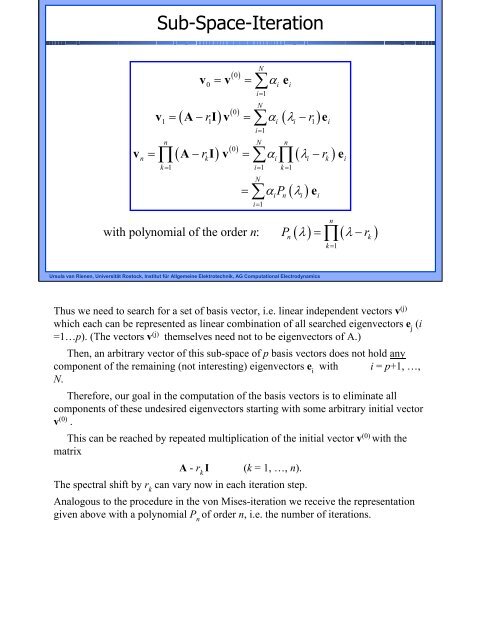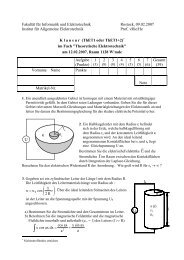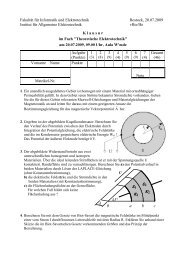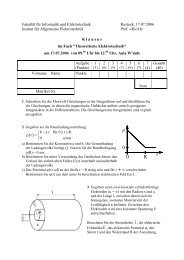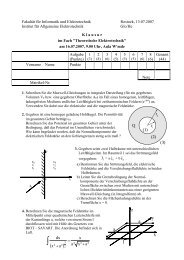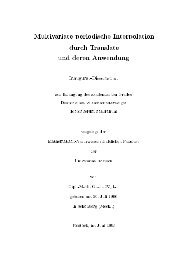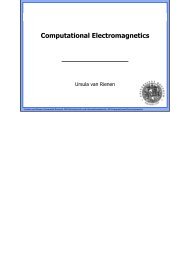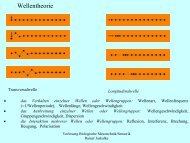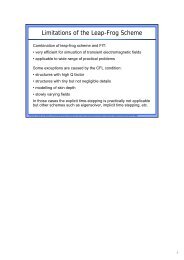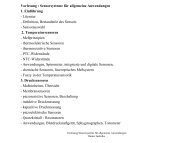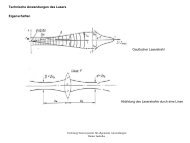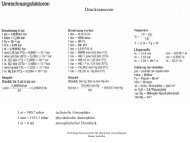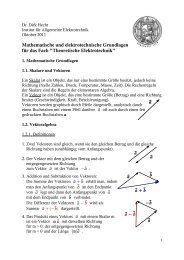Curl-Curl-Eigenvalue Equation - Institut für Allgemeine ...
Curl-Curl-Eigenvalue Equation - Institut für Allgemeine ...
Curl-Curl-Eigenvalue Equation - Institut für Allgemeine ...
Create successful ePaper yourself
Turn your PDF publications into a flip-book with our unique Google optimized e-Paper software.
Sub-Space-Iteration<br />
0<br />
( r )<br />
( r )<br />
( 0)<br />
( 0)<br />
( 0)<br />
i=<br />
1<br />
( λ r)<br />
1 1 i i 1 i<br />
i=<br />
1<br />
n N n<br />
( λ r )<br />
n k i i k i<br />
k= 1 i= 1 k=<br />
1<br />
N<br />
v = v = α e<br />
v = A− I v = α − e<br />
∏<br />
v = A− I v = α − e<br />
=<br />
∑<br />
N<br />
∑<br />
∑ ∏<br />
N<br />
∑<br />
i=<br />
1<br />
i<br />
α P<br />
i<br />
( λ )<br />
e<br />
i n i i<br />
( λ) = ( λ−<br />
)<br />
with polynomial of the order n:<br />
P r<br />
n<br />
n<br />
∏<br />
k = 1<br />
k<br />
Ursula van Rienen, Universität Rostock, <strong>Institut</strong> <strong>für</strong> <strong>Allgemeine</strong> Elektrotechnik, AG Computational Electrodynamics<br />
Thus we need to search for a set of basis vector, i.e. linear independent vectors v (j)<br />
which each can be represented as linear combination of all searched eigenvectors e j<br />
(i<br />
=1…p). (The vectors v (j) themselves need not to be eigenvectors of A.)<br />
Then, an arbitrary vector of this sub-space of p basis vectors does not hold any<br />
component of the remaining (not interesting) eigenvectors e i<br />
with i = p+1, …,<br />
N.<br />
Therefore, our goal in the computation of the basis vectors is to eliminate all<br />
components of these undesired eigenvectors starting with some arbitrary initial vector<br />
v (0) .<br />
This can be reached by repeated multiplication of the initial vector v (0) with the<br />
matrix<br />
A - r k<br />
I (k = 1, …, n).<br />
The spectral shift by r k<br />
can vary now in each iteration step.<br />
Analogous to the procedure in the von Mises-iteration we receive the representation<br />
given above with a polynomial P n<br />
of order n, i.e. the number of iterations.


